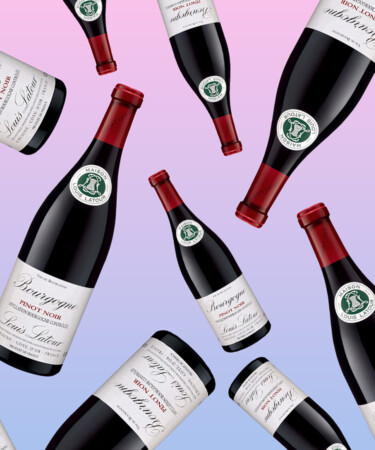Located in the Aloxe-Corton commune in Burgundy’s Côte-d’Or one will find Louis Latour, a historic winery established in 1797 by third-generation winegrower Jean Latour. Over the centuries, the Latour family has retained ownership of the winery and gradually expanded its vineyard holdings in some of the most prized Burgundian villages. Today, the winery owns approximately 120 acres of vineyards, roughly 67 of which are Grand Cru, making Louis Latour the largest holder of Grand Cru plots in all of Burgundy.
While the family primarily focuses on Pinot Noir and Chardonnay production in Burgundy, the wine label has spread to other French regions in recent decades, including Ardeche, Beaujolais, and Les Pierres Dorées. And while several Louis Latour bottles can fetch hundreds or even thousands of dollars, the winery also produces a number of entry-level wines available for less than $50.
Currently in its 11th generation of family ownership, Louis Latour is one of the longest family-owned producers in Burgundy. Here are six more things you should know about the wine brand.
-
The Latour family owned several vineyards in Burgundy before they officially established their winery.
Sixty-six years before Maison Louis Latour was founded, Jean Latour’s grandfather Denis purchased vines in the Côte de Beaune. A cooper by trade, Denis recognized the tremendous potential of Burgundy’s terroir and wanted a piece of it for himself, though formal winemaking would not begin for several decades. Over the years, the family would continue operating the vineyards, and in 1768, Jean relocated to Aloxe-Corton to continue the family business. There, he established a cooperage of his own and acquired multiple other plots in the area, including Aloxe-Corton “Les Chaillots,” Corton “Grèves,” and Corton “Bressandes.” When the French Revolution broke out in 1789, the war significantly disrupted land distribution and ownership, freeing up acres of land to plant vines. Latour seized the moment, and eight years later, Maison Louis Latour was born.
-
In 1867, Maison Louis Latour became a négociant.
As demand for their wines increased in the early to mid-1800s, the Latour family knew they would not be able to produce enough with their current grape supply. In 1867, the third Louis Latour in charge (and the 6th-generation owner) purchased the négociant firm Lamarosse Père & Fils, expanding the business to the merchant side. From that point on, Louis Latour has produced wine from grapes grown in its own vineyards, as well as those sourced from other growers in the surrounding area. For bottles exclusively produced with fruit grown on estate vineyards, look for bottles labeled “Domaine Louis Latour.”
-
The family brought Chardonnay grapes to the Corton-Charlemagne subregion.
While Louis Latour operated successfully for nearly a century, things shifted in the 1870s when phylloxera ripped its way through Burgundy. In Corton-Charlemagne — where the Latour family owned several vineyards — the majority of the vines planted before the outbreak were Aligoté, and almost all were entirely decimated. Rather than replanting Aligoté, the fifth Louis Latour at the maison’s helm made the decision to replant with Chardonnay. Often viewed as a turning point for the Corton-Charlemagne region, Louis Latour is widely credited with introducing Chardonnay to the area, which was later granted AOC status in 1937.
-
All Domaine Louis Latour winemaking takes place in a five-story structure built directly into a hill.
Every bottle of wine made from estate fruit is produced and aged at the Corton Grancey Cuverie, which the Latour family acquired in 1891. Completed in 1834, the cuverie was designed as the very first purpose-driven winery in France. The production facility itself consists of five stories, each built into the hillside to allow for winemaking to be carried out by gravity. Each new step of the process is marked by a journey down a level before everything wraps up in the cellar, where wines rest in 228-liter wooden barrels. The cellars house approximately 800 barrels and 250,000 bottles of wine at any given time.
-
Louis Latour is the only winemaker in Burgundy using barrels from its own cooperage to age wines.
For 228 years, barrel-making at the Louis Latour Cooperage has been a crucial part of the winemaking process, with the house exclusively utilizing barrels from its own cooperage to age wines. All oak is sourced from forests in northern France and aged outdoors for two years before it’s handcrafted into a barrel using traditional methods. Each barrel is then toasted and branded with its year of production before any wine is added. The cooperage produces roughly 3,500 barrels per year, with roughly half used for Louis Latour wines exclusively. The remaining barrels are consistently in high demand, with a lengthy global waitlist filled with producers waiting to get their hands on the prized casks.
-
In 1997, Louis Latour was admitted to the Hénokiens Association.
To celebrate Louis Latour’s 200th birthday, the winery was admitted to the Hénokiens Association, a French-based company celebrating the longevity of global family-owned corporations. Established in 1981, Hénokiens was founded on the premise of creating space for these corporations to exchange ideas, thus strengthening their family operations. In order to be admitted to the association, a company must be family-owned, at least two centuries old, in good financial standing, and a descendant of the founding family member must either be the majority shareholder, actively involved in management, or on the board. Today, there are 57 active members of the Hénokiens Association across 10 countries.
